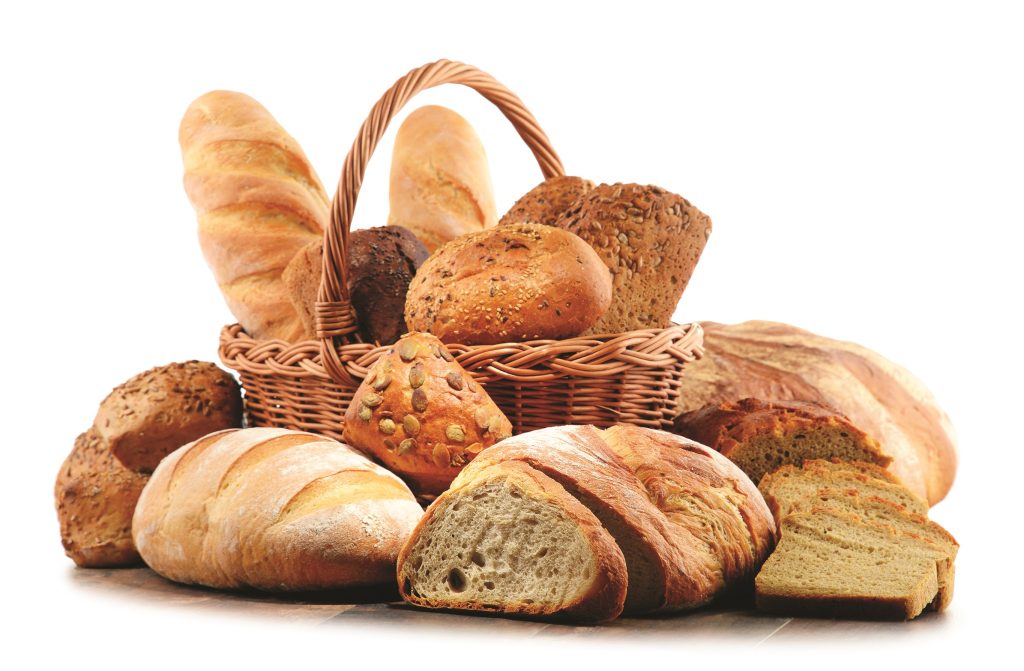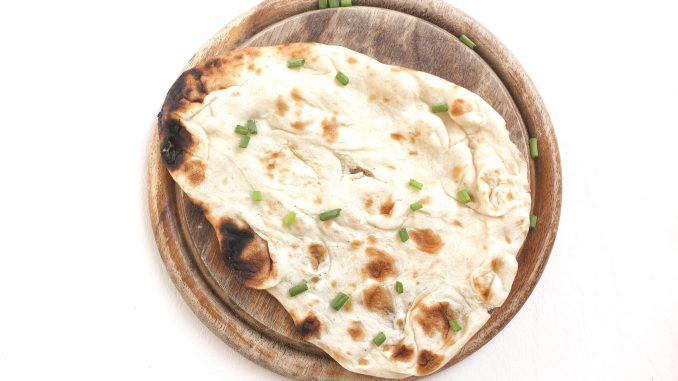Bread Helps Carry the Deli
June 1, 2019 | 6 min to read
Specialty breads in supermarket delis, such as naan and artisan breads, can boost sales when effectively displayed and cross-merchandised with deli cheeses, meats, and dips. Companies like Backerhaus Veit Ltd., Boulart, and ACE Bakery Ltd. emphasize quality ingredients without additives. Warren Stoll highlights the popularity of panini breads and suggests that emphasizing artisan options can attract health-conscious consumers. Overall, retailers should create visually appealing displays that promote complete meal solutions.

Specialty breads sold in supermarket delis—pitas, flatbreads, artisan breads, naan, wraps, specialty buns, gluten-free varieties and more—usually aren’t destination items.
But they can still help drive sales when handled correctly.
With attractive displays, smart cross merchandising and inventive menu ideas, fresh, delicious breads can help invite shoppers to sample the deli department’s many wares.
The quality and variety of specialty deli breads has never been better. For example:
* Backerhaus Veit Ltd. in Ontario, Canada, boasts an extensive line of artisan breads, including craft breads, panini, delicatessen breads, specialty and fruit breads, baguettes and dietetic/lifestyle breads. All are prepared with naturally-aged dough using bromate-free flour and naturally cultivated sours. No artificial colors or flavorings are added, and they are baked in stone hearth ovens.
* Boulart, based in Quebec, Canada, states its philosophy clearly: “Keep your fluff. Because we believe that less is more. No additives. No added sugar. No GMOs. Sometimes saying no can be a good thing.” Its line includes baguettes, dinner rolls, loaves, focaccia, bites, burger buns, fougasses, submarine, demi-baguettes and sandwich buns.
* ACE Bakery Ltd. in Ontario, Canada, produces a line of high-quality baguettes, loaves, buns, rolls, bagels and more. Behind the tag line “Only the simplest, premium ingredients,” it makes a strong case to consumers looking for all-natural products. “No preservatives. Ever. Flour, Water, Salt, Yeast…we only use ingredients you can pronounce and can find in your home. No preservatives. No enzymes. That’s all that goes into our remarkable bread.”
“Deli breads can be best merchandised as providing full sandwiches or accompaniments to meals, (both) lunch and dinner,” says Karen Toufayan, vice president of marketing and sales at Toufayan Bakeries, based in Orlando, FL. “Thus, deli cheeses, meats and hummus can provide excellent cross merchandising opportunities and make this section a total meal destination.”
Retailers will benefit most, says Toufayan, from a display that shows a complete meal “consisting of the various items found in the deli section.” She recommends that operators “play up either the breads’’’ exotic flair, with for example naan or brioche, or the health benefits the breads offer, including non-GMO, organic and gluten-free varieties.”
Since retailers are competing with other outlets offering meal solutions, Toufayan adds, “use the breadth of the deli offerings for exciting, new, different meal solutions that are easy to prepare. Also, since a number of breads offer ‘healthier’ alternatives—such as all-natural, organic, gluten-free, non-GMO—you can attract consumers looking for these options that other meal outlets do not offer.”
Opportunity and Change
Warren Stoll, marketing director for Kontos Foods, Inc. in Paterson, NJ, says panini breads are the dominant trend in supermarket delis at present. “Flatbreads in general, and breads that have grill marks on them to mimic a panini, are absolutely there. You see them stacked along the glass near the pre-made sandwiches to get people through lunch quickly.”
While trends are, of course, important, Stoll points out that in the deli “some things probably haven’t changed. I am a big fan of delis, whether they be in the supermarket or independent. Of course you can always get white, rye, wheat, round rolls, long rolls, etc.”
What the best deli departments do, Stoll says, is display their wares almost theatrically. “You can see many a glass counter, and a lot of delis lay out meats and cheeses with salads that they make. They make a beautiful fresh array every day of what is there, and then next to that you can see an array of pre-made sandwiches.”
Retailers know that when people come in during the day, they are often “looking to have lunch on the go or to sit in the park. They want to be in and out quickly, and the stores want to get them in and out quickly. So they pre-make things often for just that day, and they arrange it so nicely next to everything else that they have so you can’t miss it; it looks very appetizing.”
Artisan breads represent an opportunity that, according to Stoll, too few retailers take advantage of. “I don’t know that I have seen too many deli counters advertising artisan breads as artisan breads.”
Another major force in supermarket delis continues to be easily handheld foods, most notably sandwiches, Stoll notes. “Things that you can walk around with, that you don’t have to sit to eat with a fork and a knife, are definitely there.”
Stoll says the best items to cross merchandise with are the obvious ones. “If the bread is going to be used to make the sandwich, the items that I have always seen cross-referenced would be the salads, like coleslaw and potato salad, along with pickles or any kind of pickled vegetable, whether it be cabbage or pickled green tomatoes. Even potato chips and other snacks; anything that would go with a sandwich at lunch, right next to it.”

The Great Thing
Supermarket deli shoppers “usually find a mix of specialty breads, such as flatbreads and ethnic breads, plus more traditional breads, like sandwich rolls,” notes Jenni Bonsignore, marketing manager for Valley Lahvosh Baking Co., based in Fresno, CA.
What Bonsignore calls “the great thing about the deli section” is that it “perfectly lends itself to cross merchandising opportunities. We make Lahvosh crackers that are a perfect carrier for cheeses and spreads as well as a 15-inch Lahvosh Round that is a healthier option for pizza crust. Most of the ingredients you would need for hors d’oeuvres or pizzas can be found in the deli, so it’s an easy match to merchandise the ingredients with the bread.”
Showing the bread with compatible ingredients, possibly with a recipe or serving suggestions, is “a great way to entice customers to purchase multiple deli items,” Bonsignore has found over the years. “You want to make it easy for the consumer to see the possibilities for combining it all into a meal.”
Bonsignore calls for creative displays, recipes and “continuing to offer a wider variety of breads,” which she points out “are all positives. Consumers are more adventurous and willing to try new varieties and flavors. At the same time, they want information about the food they buy—especially if it helps make their menu planning easier.”
Front and Center
Jim Viti, vice president of sales, marketing and product development for DeIorio Foods, Inc. in Utica, NY, suggests that flatbreads and specialty breads “can take front and center in the deli to entice the consumer with new ideas for meal planning that can be out of the ordinary.”
Menu ideas that shoppers can download on their phones or take with them is one way of spurring sales. So, says Viti, is having “easy grab-and-go placement of all the components that tie into the bread item being promoted.”
What Viti judges to be a good bread display in delis is one that offers “fresh presentation and enticing graphics,” which he insists are key for impulse sales and mealtime ideas. As for packaging innovation, he cites clean-label presentation on the front of the package and “easier to understand claims for fiber, protein, etc.”
Operators should find and generate ideas and promotions that tie into the product itself, says Viti, “and the ideas should be only for a limited time so they don’t become stale; every week, if possible. They should tie into the seasonal planogram.”
The bottom line, says Viti, is that generating a crisp bread business out of the produce department requires “nothing terribly new—fresh, clean, organized, simple to understand and easy for the time-compromised consumer.”
Opportunities abound for bread in the supermarket deli. db
10 of 15 article in DeliBusiness June/July 2019

